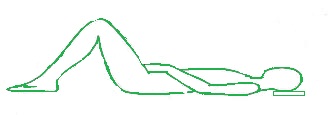Notes on How to Practise
You want to learn, practise and become good at two things – inhibition and direction.
Inhibition
(Stopping your habitual responses)
When you’re thinking of standing up out of a chair, for example, you want to stop for a moment to ensure you haven’t just gotten ready and stood up in your old, habitual way. You want to prevent the old habit from beginning, by stopping. You want to take time when you can to ‘unhook’ from the old habits of use. This gives you a chance to change your old use to something different, something better. This can be practised with anything you’re doing during the day, of course, and not just standing and sitting.
Direction
(Letting go into a lengthened and widened shape, an opened out stature)
Once you’ve stopped your old use from ‘kicking in’, you want to replace it with something better. You want to let go, to allow your body to be at its full height and width. So you can think of letting your neck be free so your head is balanced easily on top of your spine (rather than tensing your neck and pulling your head downwards as most of us do). You can think of your torso lengthening (rather than slumping or tightening) and you can think of your torso widening (rather than narrowing at the front or back).
Lying down in semi-supine
This will help you let go into a more open out shape. You can also use this time to practise letting go in the way you wish – you can practise freeing your neck, allowing your torso to lengthen and widen, your arms and legs to lengthen, etc.

The importance of practice between lessons
Getting better at inhibition and direction will improve your use, so you can grow into a more efficient posture, and your body can function better. As this happens, any problems associated with your old use will tend to recede, as you stop putting yourself in postures that cause or contribute to the problem.
Lessons help you get used to a new position becoming more familiar, and your teacher can give you reliable feedback on the shape you are in. Outside of lessons, it can be helpful to sometimes use mirrors (shop windows, etc) to see what shape your body is actually in, and compare this to the shape you feel you are in. Your eyes will give you reliable feedback, whereas your feelings won’t.